Can You Sow Annuals in July? Tips for a Lush Summer Garden
Thinking about what to plant for a burst of color in your garden? Yes, you can sow annuals in July! While it might seem late in the growing season, planting annuals during this time can extend the vibrant display in your garden.
Fast-growing flowering annuals offer a beautiful splash of color before fall arrives.
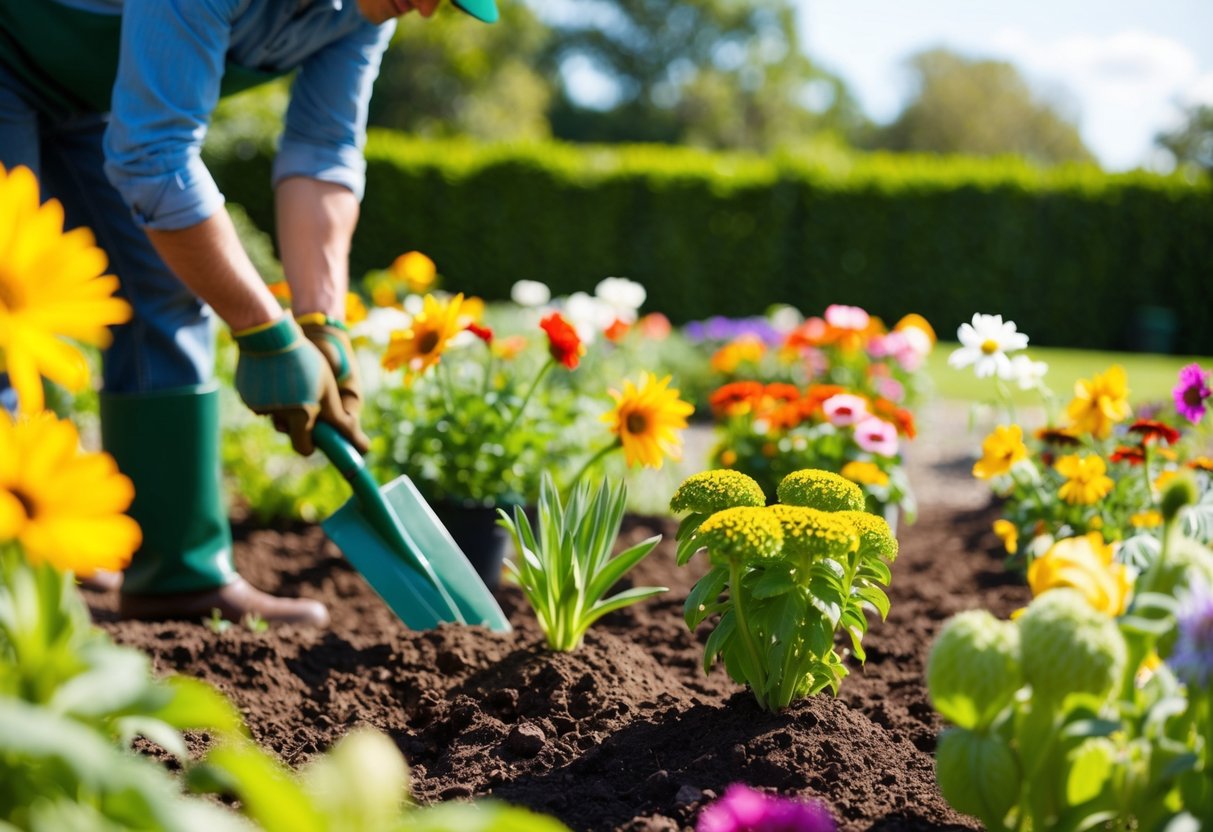
When you choose the right annual seeds, your garden can bloom brilliantly in just a few weeks. Varieties like Cleome, Black-Eyed Susan, and other quick-growing options thrive even when sowed later. They promise a showy landscape well into late summer and fall as long as you consider the conditions they need.
Getting these annuals in the ground is easier than you might think. Sowing seeds in July lets you enjoy a delightful garden scene that can continue to surprise you.
So grab your gardening tools, choose your seeds, and get ready for a rewarding and colorful season ahead.
Understanding Plant Categories and Their Growth Cycles
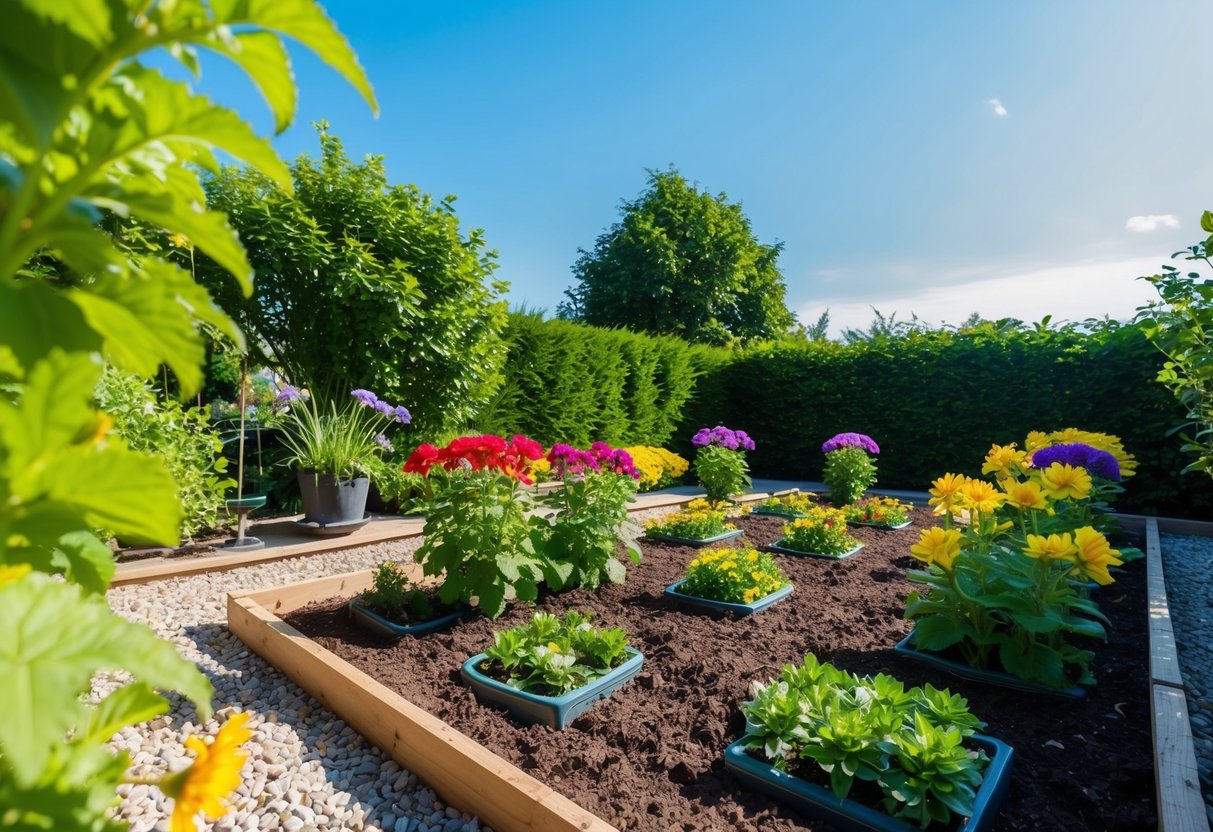
When sowing plants, it helps to know their life cycles and how they adapt to your region’s climate. Being aware of these differences ensures you plant at the best time for your garden. These details can influence whether your garden blooms beautifully or struggles through the seasons.
Annuals Vs. Perennials and Biennials
Annuals live for just one growing season, from seed to flower to seed again. They are ideal if you want a lot of blooms fast. Marigolds and zinnias are examples that can return each year through reseeding.
Perennials, in contrast, come back for several years. They often spend the first year establishing roots before really taking off. Roses and hostas fall into this group, making them reliable choices for your garden.
Biennials take two years to complete their cycle, spending the first year growing leaves and roots, then blooming in the second. Foxgloves and hollyhocks are popular biennials that can add charm across multiple seasons.
The Significance of Hardiness Zones
Understanding hardiness zones helps you know which plants thrive in your area. The USDA hardiness zones divide regions based on average winter temperatures.
Choosing plants suited to your zone means less worry about unexpected frosts or heatwaves. If you live in Zone 5, for instance, daylilies will likely do well, while tropical plants might struggle.
Knowing your zone also helps in planning when to sow seeds, whether for annuals that need a warm start or perennials that can handle a late frost.
Always check plant labels or ask at your local garden center for advice tailored to your area.
Choosing the Right Flowers to Sow in July

When planting in July, it’s important to select flowers that can handle the heat or grow quickly to bring color to your garden before the first frost. Here are some excellent flowers to consider.
Heat-Tolerant Annuals for Late Planting
In July, choosing heat-tolerant flowers is crucial. Zinnias and marigolds are excellent choices as they thrive in warm conditions. These flowers stand up well to the intense summer sun and can bring vibrant colors to your garden.
Zinnias offer a wide range of colors and are easy to care for.
Another great option is sunflowers. They love the sun and grow tall, providing a dramatic backdrop in any garden. Nasturtiums not only bring color but also attract beneficial insects. They grow well in the summer heat, making them perfect for July planting.
Consider including calendula for its bright yellow and orange blooms, which are resilient and add a cheerful touch.
All these flowers are hardy and perfect for enriching your garden during the hot summer months.
Fast-Growing Flowers for Quick Blooms
For a quick burst of color, focus on fast-growing flowers.
Cosmos are a fantastic choice and are well-known for their rapid growth from seed to bloom. These flowers can quickly fill up a space with their delicate and bright blossoms.
Nasturtiums and zinnias also fall into this category, offering speedier blooms compared to many other plants. They grow rapidly and can start flowering soon after you sow them.
Another fast option is marigolds, which are among the easiest to grow and quickly produce bright, cheerful blooms.
Opt for these fast-growing annuals to enjoy lovely flowers before the chill sets in. They help ensure your garden remains vibrant and full of life as the season progresses.
Sowing Seeds and Transplanting Tips
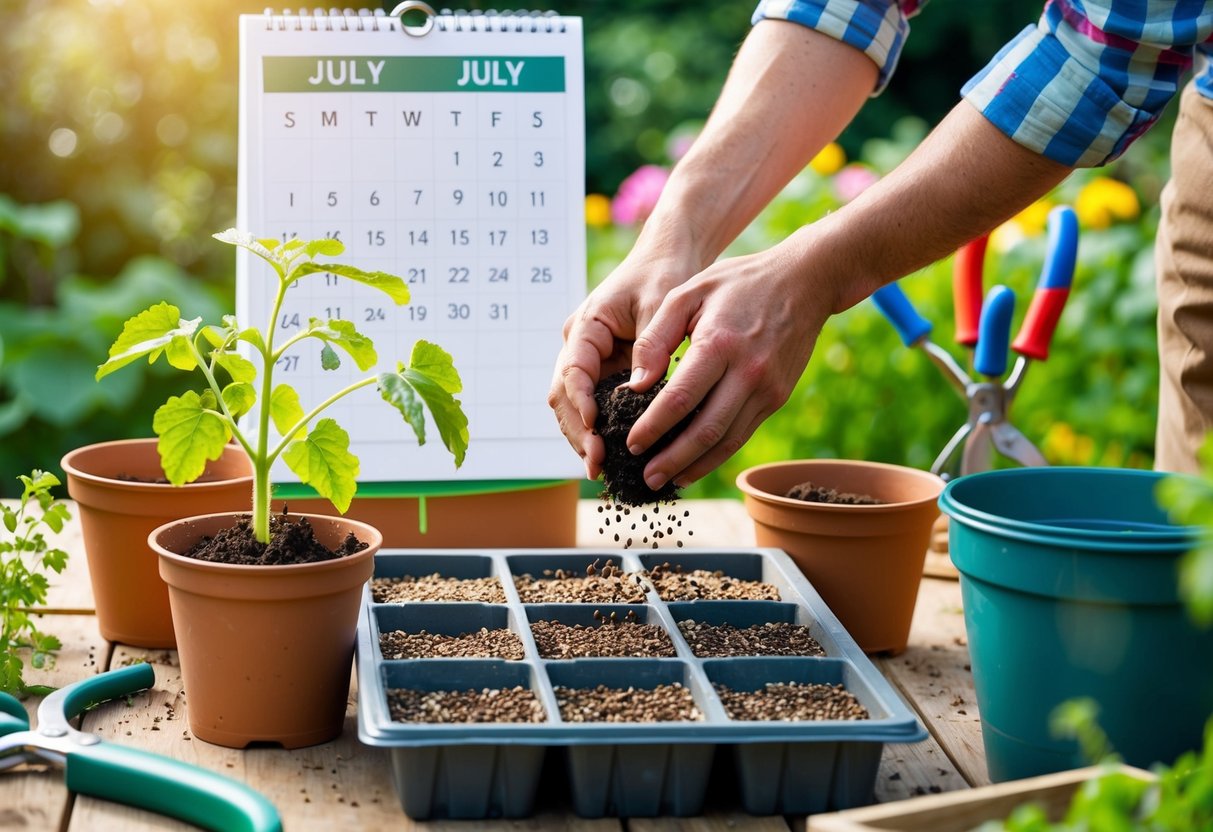
When sowing seeds or transplanting seedlings in July, timing and proper techniques are key to success. It is important to manage garden beds carefully to create optimal growing conditions.
Proper Techniques for Sowing Seeds
Sowing seeds in July can be a rewarding task if you follow some key steps.
Start by choosing seeds that are well-suited for summer planting, like certain vegetables and flowers such as marigolds or zinnias.
When preparing garden beds, ensure the soil is loose and well-drained.
It’s helpful to sow seeds at the right depth. Small seeds should be barely covered with soil, while larger seeds can be planted deeper.
Keep the soil consistently moist to encourage germination, but avoid overwatering as this can lead to mold or rot.
If you’re planting in a warmer region, consider using shade cloth to protect young seeds from the intense sun.
Transitioning Seedlings and Transplants to the Garden
Transplanting seedlings successfully requires careful attention.
Begin by hardening off your seedlings. This means gradually exposing them to outdoor conditions, usually over a week. Place them outside for a few hours each day, increasing the time they spend outdoors.
When the seedlings are ready to move to the garden, choose a cool, cloudy day for transplanting. This reduces the stress on the young plants.
Dig holes that are just big enough for the root ball of each seedling. Space them according to plant guidelines to ensure they have enough room to grow.
Keep an eye on your transplanted seedlings, especially during the first week. Regular watering is crucial, but be careful not to flood them. These steps will help ensure that your plants thrive in their new environment.
Caring for Your Summer Annuals
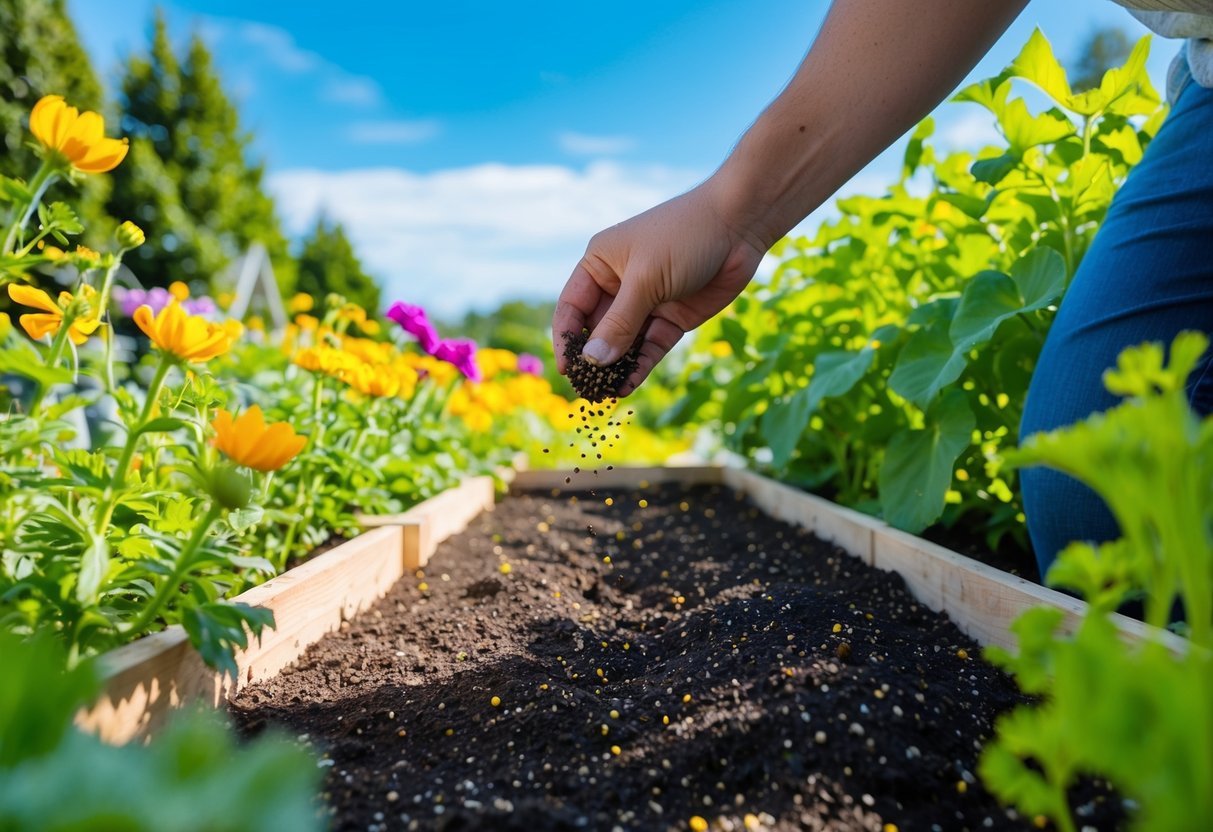
When taking care of summer annuals, it’s vital to pay attention to watering, fertilizing, dealing with pests, and removing spent blooms. These practices ensure your plants thrive and keep your garden vibrant.
Watering and Fertilization
Keeping your summer annuals well-hydrated is super important, especially during hot July days.
Water your plants early in the morning or late in the afternoon to reduce evaporation. Make sure the soil is consistently moist but not soggy.
Using a drip irrigation system can help deliver water directly to the roots, reducing waste.
Fertilizing is also key to boosting growth.
Consider using a balanced, slow-release fertilizer every four to six weeks. It helps provide nutrients without overwhelming the plants.
Liquid fertilizers can offer a quick nutrient supply if the plants need a little extra help.
Remember to follow package instructions to avoid over-fertilization, which can harm your plants.
Pest Management and Deadheading
Pests can quickly become a problem in a garden. Keep an eye out for signs of damage or disease on your annuals.
Regularly inspect the undersides of leaves where insects often hide. Introducing beneficial insects like ladybugs can help control aphid populations naturally.
Deadheading is another important practice. By removing spent blooms, you encourage new growth and more flowers. This also helps keep your garden looking tidy and beautiful.
Look for blooms that have faded or dried up, and snip them off just above the nearest set of leaves. This simple step helps your annuals focus their energy on producing more flowers and invites pollinators to visit.
Creative Uses and Benefits of Planting Annuals
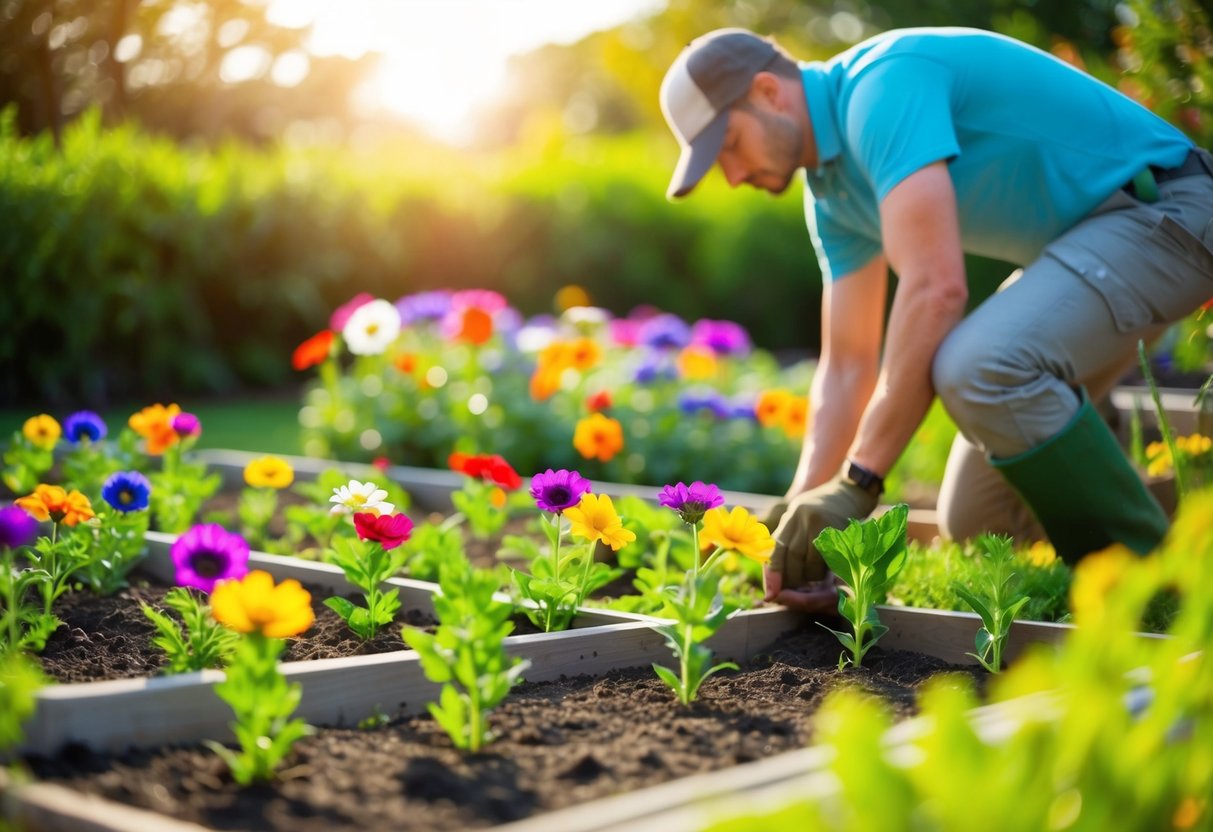
Planting annuals can transform your garden with vibrant color and offer edible benefits. From enhancing your meals with edible blooms to creating stunning arrangements, annuals open up a world of possibilities.
Edible Flowers and Herbs
Annuals like nasturtiums and marigolds provide more than just beauty. You can use their edible petals to add color and flavor to salads and desserts.
Nasturtiums have a peppery taste, similar to watercress, which pairs well with savory dishes. Marigolds have a citrusy flavor, ideal for garnishing.
Furthermore, planting annual herbs such as basil or cilantro adds fresh, aromatic leaves to your meals.
Grow them in small pots for easy access and enjoy your fresh-harvested flavors right from your garden.
Cutting Gardens and Container Arrangements
Creating a cutting garden lets you have fresh flowers indoors regularly. Plant annuals like zinnias and cosmos to ensure you have an abundance of blooms for your home. Choose a spot in your garden specifically for this purpose to always have flowers to cut.
For container gardening, using annuals in hanging baskets or pots is a fantastic way to add interest to patios or balconies. Combine different colors for vibrant displays throughout the growing season. Annuals grow quickly and can fill your containers with life and color in no time!







